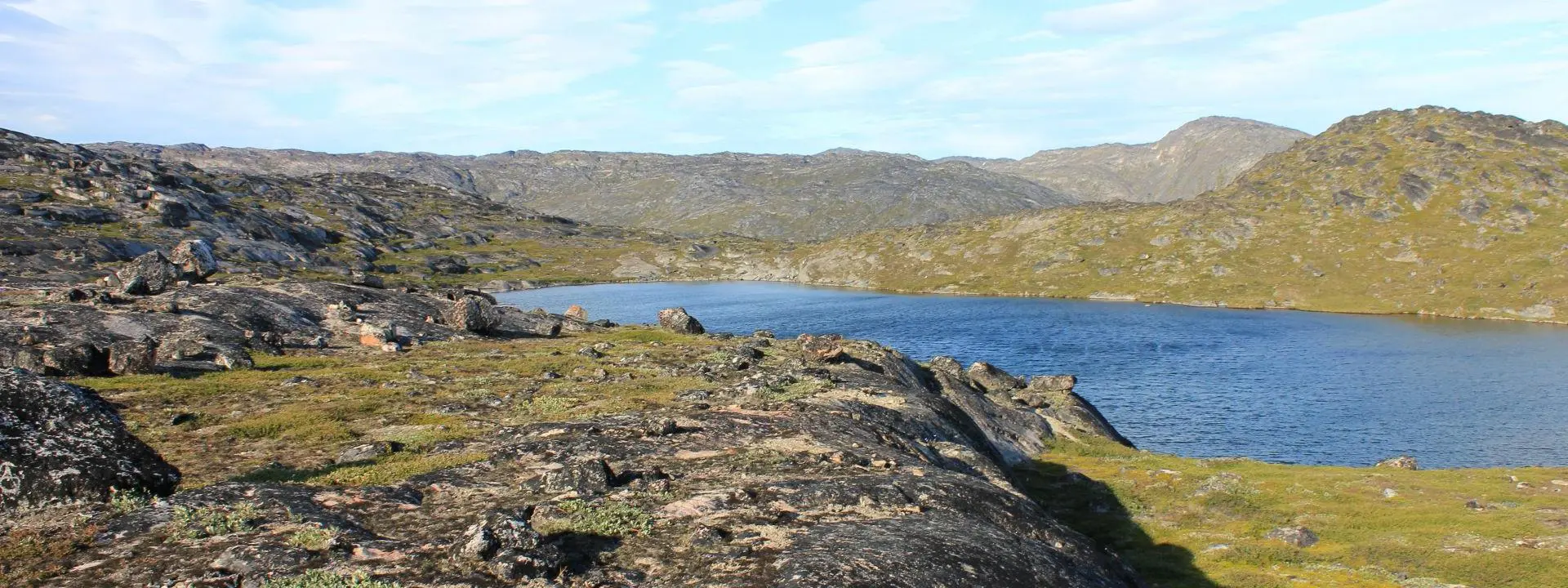Extreme climate affects carbon storage abilities of thousands of lakes in West Greenland

A new international study has found that tens of thousands of lakes in West Greenland have begun emitting carbon into the atmosphere due to record heat and precipitation.
Led by researchers from the University of Maine Climate Change Institute, and co-authored by Dr Ryan Pereira, an expert in carbon-water dynamics at The Lyell Centre, Heriot-Watt’s Global Research Institute of Earth and Marine Sciences, the study found that a combination of extreme climate events over two months in autumn 2022 caused ecological change that ‘pushed Arctic lakes across a tipping point’.
Ordinarily, Greenland would experience snow during the autumn months however, due to a rise in temperatures, rain occurred instead, thawing permafrost - usually frozen soil that stores significant amounts of organic carbon – and releasing carbon, iron, magnesium and other elements into the lakes, turning them brown.
...this study has highlighted the dramatic effect that global warming is having on Arctic areas traditionally known for storing huge amounts of carbon. As well as reversing their carbon sink abilities, the rapid browning of the lakes impacts the ecosystem resilience; a worrying trend that climate models predict will become up to 290% more frequent across the globe by the end of the century.
Less than a year later, by July 2023, the physical, chemical and biological properties of the lakes had undergone a widespread transformation that previously would’ve taken hundreds of years to occur.
Professor of Paleolimnology and Lake Ecology at the University of Maine, Jasmine Saros, led the study.
She said: “This rapid rate of change has been unprecedented, greatly contrasting with the slow, multi-decade-long browning experienced in lakes across the Northern Hemisphere.
The influx of dissolved organic carbon and nutrients from the permafrost can also have negative impacts on water supplies, creating bacteria growth that not only affects the water’s taste and smell, but can also potentially cause health problems from increased exposure to metals.
Professor Saros said: “The increased dissolved organic material can interact with drinking water treatment processes to produce chlorination byproducts called trihalomethanes, which may be carcinogenic.”
As lead of the Carbon-Water Dynamics research group at the Lyell Centre, Dr Ryan Pereira has led a number of international studies and projects to improve understanding of how water sources are affected by changes in the carbon cycle.
He said: “Through close collaboration with academic partners across the globe, this study has highlighted the dramatic effect that global warming is having on Arctic areas traditionally known for storing huge amounts of carbon.
“As well as reversing their carbon sink abilities, the rapid browning of the lakes impacts the ecosystem resilience; a worrying trend that climate models predict will become up to 290% more frequent across the globe by the end of the century.
“It’s important that scientists continue to work together beyond borders to capture and analysis evidence, and identify solutions to protect our Earth’s ecosystem.”
Other co-authors of the paper are Sean Birkel, Assistant Professor with the Climate Change Institute and University of Maine Cooperative Extension; Robert Northington from Elizabethtown College in Pennsylvania; Binbin Jiang from Zhejiang University of Science and Technology in China; and Suzanne McGowan from the Netherlands Institute of Ecology.
The full paper was published in the Proceedings of the National Academy of Sciences (PNAS).